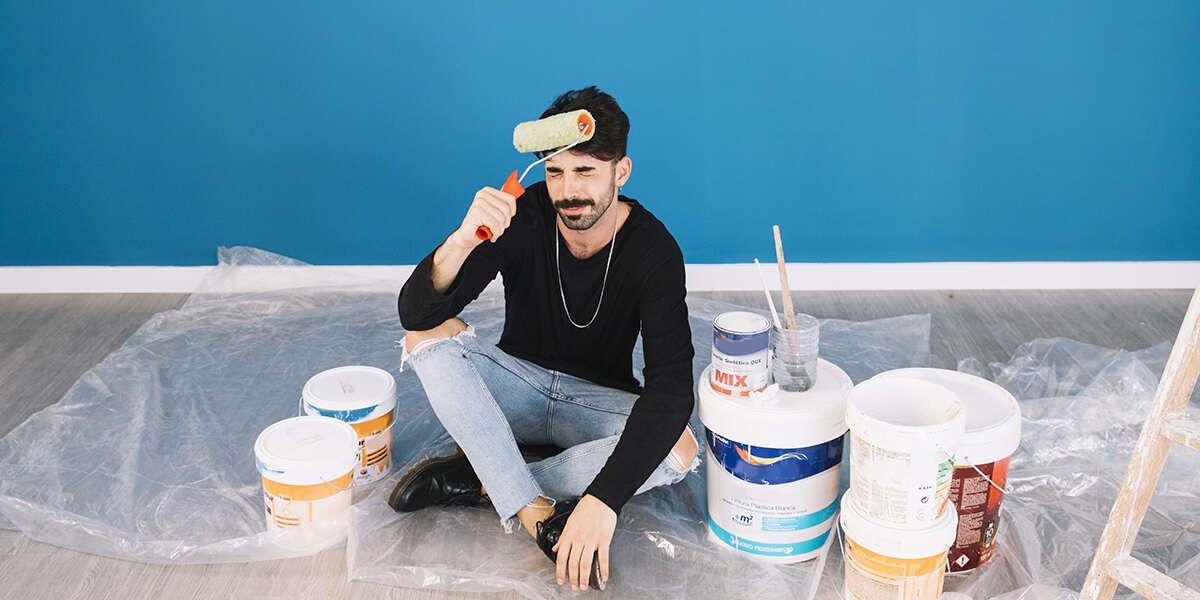
Should You Ever Paint Over Wallpaper?
Wallpaper provides an affordable way to add color and unique patterns and textures to your interior space. Quality, professionally installed wallpaper can also easily last more than a decade. However, durability can become an issue when it’s time to refresh your home’s interior with paint.
Should you go through the hassle of removing the wallpaper? What will give the better result? Most painters will tell you to avoid painting over wallpaper, but sometimes, it just makes more sense.
The leading interior house painters in Tucson, AZ, look at the pros and cons of painting directly on wallpaper to simplify your decision-making process.
The Advantages of Covering Wallpaper With Paint
Some of the advantages of painting directly on wallpaper include the following:
It Will Save You More Time
Removing wallpaper from your wall can take a lot of time. The adhesives are often tough to overcome, so removing the wallpaper can get messy. Choosing to paint over the wallpaper will end up saving you hours of backbreaking and finger-crunching work.
It’s Cheaper
If you intend to hire someone to remove the wallpaper, simply avoiding that expense can put a significant sum back into your pocket.
You Can Avoid Structural Damage
As we mentioned above, removing wallpaper is messy. You may end up damaging your walls. In that instance, you may find yourself replacing whole sections of drywall instead of just worrying about the right color of paint to use and the painting company to hire.
The Disadvantages of Painting Walls With Wallpaper
Some of the downsides of painting over wallpaper include the following:
The Paint Job May Not Last
Painting over wallpaper increases the risk of the paint peeling, bubbling, or cracking as the wallpaper expands down the lines.
The Finished Look May Not Be Appealing
The designs and texture on the wallpaper will likely remain visible, even after painting multiple coats over it. Therefore, you’ll have to deal with a paint job that doesn’t have the smoothness you had in mind.
The Paint May Not Adhere to the Surface
Experts providing painting tips often recommend only painting a smooth surface because the paint will adhere better in that instance. Wallpaper — especially one that isn’t flush against the wall — might make adhesion harder.
A Quick Guide to Painting Over Wallpaper
If you decide to proceed with painting over wallpaper, you can do a few things to get good results:
- Inspect the wallpaper. You’ll get good results if the wallpaper is secure against the wall and doesn’t have any peeling edges or tears.
- Clean it thoroughly. You need to wipe down the wallpaper with a damp cloth to ensure you’re painting over a clean surface.
- Fill up any gaps. Use putty to fill up any gaps on the surface and sand lightly to improve adhesion.
- Paint multiple layers. Whatever the wallpaper painting methods you choose, you need at least three layers of paint for a smooth finish.
Get Expert Help With Covering Wallpaper With Paint
Don’t want to go through the hassle of painting over wallpaper or handling drywall repair on your own? Call Nelson J. Greer Painting Contractors today at (520) 325-5800.
Categories
- Church Painting (1)
- Commercial Painting (12)
- Exterior Painting (4)
- Interior Painting (2)
- FAQ (1)
- Floor Coating & Sealing (1)
- General (13)
- Industrial Painting (1)
- Metal Painting (1)
- Paint Prep (3)
- Painting Contractors (4)
- Pool Deck Epoxy (1)
- Residential Painting (32)
- Baseboards & Trim (2)
- Cost (3)
- Exterior Painting (8)
- Interior Painting (7)
- Tips (2)
- Walls (6)
- Roof Replacement (1)